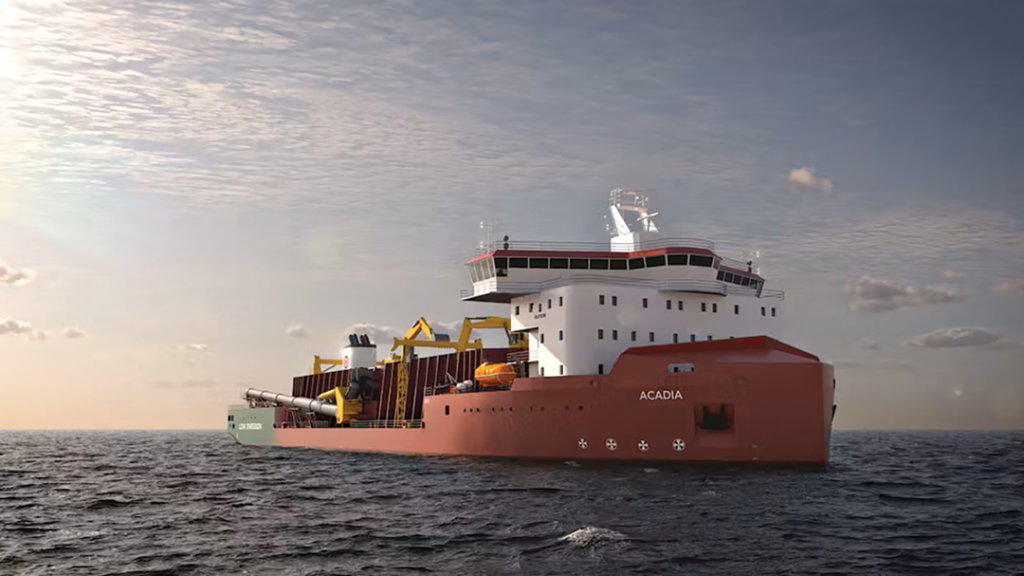
In July, a steel-cutting ceremony was held at the Philly Shipyard marking the start of construction on Acadia, the first U.S.-flagged Jones Act-compliant, inclined fallpipe vessel built in the country.
The vessel is being built for Houston-based Great Lakes Dredge & Dock Co. and will be used to move rock from quarries along the U.S. East Coast for subsea deposit at offshore wind project sites.
GLDD engaged engineering firm Ulstein Design and Solutions B.V. for the vessel’s conceptual and regulatory design engineering with the goal of building the vessel to state-of-the-art specifications and the highest maritime standards. That includes best-in-class air-quality controls to adhere to EPA Tier 4 emissions standards.
When delivered, the 461-foot by 112-foot Acadia will be one of only four vessels in the world with its capacity and capability.
“The demand for installation vessels is strong both in the domestic and the international offshore wind markets,” said Great Lakes’ Senior Vice President of Offshore Wind Eleni Beyko.
According to GLDD’s fourth quarter financial report, the company signed its first subcontract for procurement of rock with Carver Sand & Gravel LLC, a U.S. quarry in the state of New York. The development, according to the report, solidified “the company’s entry into the offshore wind market and will support Great Lakes’ awarded rock installation contract for Empire Wind I with an estimated installation window in 2025.”
In December, Great Lakes was awarded another rock installation contract “to perform subsea rock cable protection, a new utilization for our new vessel, the Acadia, on an unidentified U.S. East Coast offshore wind project.”
That same month, Great Lakes was awarded a third rock installation contract to perform subsea rock cable protection on another offshore wind project off the East Coast. The company’s prior contracts had been for subsea rock installation for foundation stabilization.
Great Lakes will reportedly operate Acadia to execute the latest project, which includes procurement of rock from its U.S. supply chain, transportation to and from the project site, and the subsea installation of the rock to support the wind farm’s infrastructure. Operations on the project are expected to begin in 2025 and continue into the following year.
“This project award further confirms Great Lakes’ ambition and leadership to support the emerging U.S. offshore wind industry and we look forward to expanding our participation in this market over the coming years,” said Lasse Petterson, Great Lakes’ president and CEO.
“We continue to pursue and bid on a number of other offshore wind farm projects, both domestically and internationally, with rock installations planned for 2026 and beyond,” the financial report stated.
“We expect that offshore wind will play a crucial role in helping the U.S. meet its decarbonization and clean energy goals and we believe the offshore wind power generation market offers Great Lakes long-term diversification with a strong opportunity for growth.”

